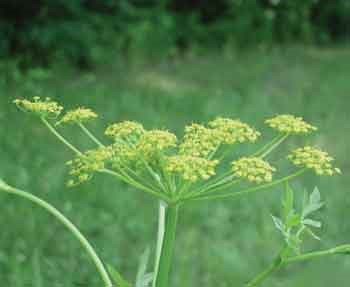Here’s another invasive plant that is spreading through Ontario and can cause problems if you come in contact with it.
Wild parsnip may have originally been brought to North America for its edible root, but this invasive plant escaped gardens and now grows wild around Ontario.
The plant is now found in every province across the country.
Wild parsnip is also known as poison parsnip – and with good reason. The stock and leaves produce sap containing chemicals that can cause a severe reaction on human skin similar to poison ivy or poison oak.
Persons who come in contact with the leaves can experience intense burns, rashes, or blisters.
Once established in an area, wild parsnip can form dense stand that force out native plants and reduce biodiversity.
Wild parsnip is easy to identify. It looks very similar to Queen Anne’s Lace which is a native species, except the flowers are yellow.
The plant grows up to 1.5 meters tall with a single green stem that is two to five centimetres thick.
It typically grows in areas like abandoned yards, waste dumps, meadows, open fields and along roadsides.
If you discover wild parsnip on your property, it is fairly easy to remove.
The most common method is just to dig it out and dispose in a proper area. Do not burn or compost the plants as the dangerous sap is can be spread.
Do not use a “weed wacker” type of device to cut the plant down as this will spray the toxic sap to other areas as well as anyone standing nearby.
If you have a particularly large infestation of the plan on your property you will probably need help to have it chemical controlled with the used of herbicides
If you are hiking on trails, stay on the trail and away from areas infested with the plant, and keep your pets on leash to avoid having them come in contact with the plant.
-Brian Lockhart, Local Journalism Initiative, New Tecumseh Times. The Local Journalism Initiative Program is funded by the government of Canada.



